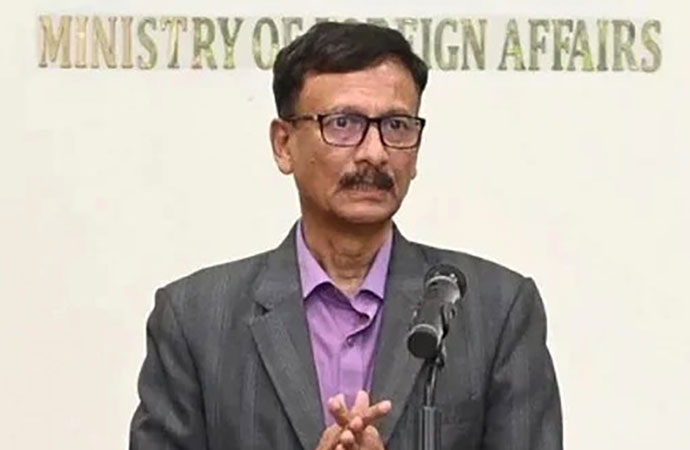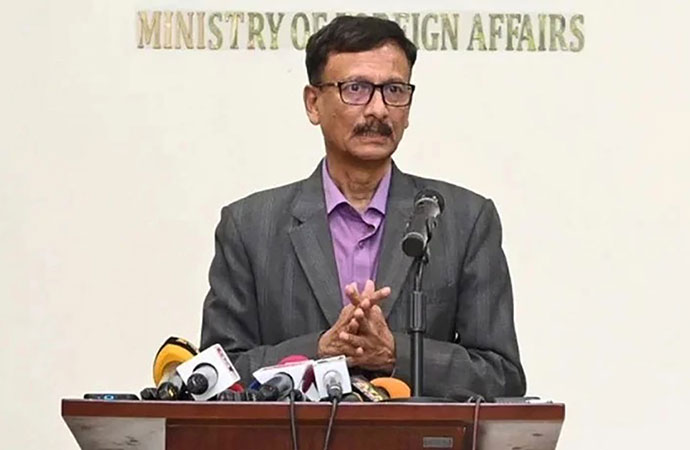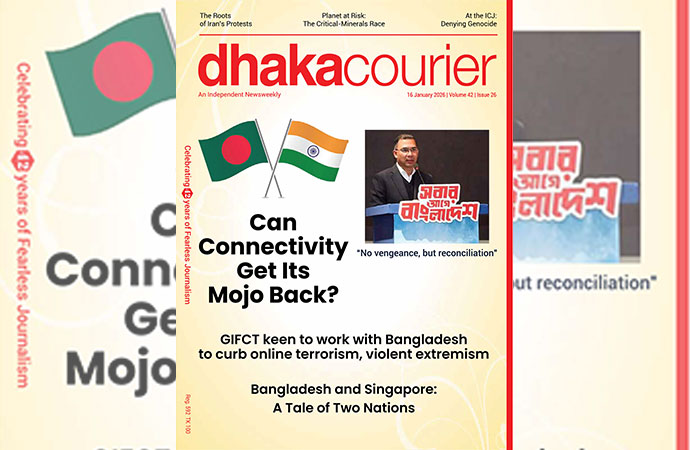Global

In this March 30, 2021 photo provided by Dawei Watch news outlet, a relative points to an open wound in the neck of 17-year old Kyaw Min Latt in Dawei, Myanmar. His March 27, 2021 shooting by a soldier was captured on CCTV cameras and shared through social media. File Photo: AP/UNB
Two black pickups speed down an empty city street in Myanmar before coming to a sudden stop. Security forces standing in the back of the trucks begin firing at an oncoming motorbike carrying three young men.
The bike swerves, crashing into a gate. More shots are fired as two of the passengers run away, while the third, Kyaw Min Latt, remains on the ground. Moans are heard as officers grab the wounded 17-year-old from the pavement, throwing his limp body into a truck bed before driving off.
The incident lasted just over a minute and was captured on a CCTV camera. It is part of a growing trove of photos and videos shared on social media that's helping expose a brutal crackdown carried out by the junta since the military's Feb. 1 takeover of the Southeast Asian nation.
An analysis by The Associated Press and the Human Rights Center Investigations Lab at the University of California, Berkeley, looked at cases where bodies of those targeted indiscriminately by police and the military are being used as tools of terror. The findings are based on more than 2,000 tweets and online images, in addition to interviews with family members, witness accounts, and local media reports.
The AP and HRC Lab identified more than 130 instances where security forces appeared to be using corpses and the bodies of the wounded to create anxiety, uncertainty, and strike fear in the civilian population. Over two-thirds of those cases analyzed were confirmed or categorized as having moderate or high credibility, and often involved tracking down the original source of the content or interviewing observers.
Since the military takeover, more than 825 people have been killed - well over two times the government tally - according to the Assistance Association for Political Prisoners, a watchdog organization that monitors arrests and deaths. The junta did not respond to written questions submitted by AP.
The HRC Lab examined hours of footage posted online over a two-month period showing dead bodies being snatched off the streets and dragged like sacks of rice before being thrown into vehicles and driven to unknown destinations. Some people have been disappeared or arrested one day and returned dead the next, their corpses mutilated with signs of torture, witnesses confirmed to AP.
Autopsies have been carried out without the permission of families. And some death certificates blame heart attacks or falls after violent attacks, contradicting witness accounts and images captured by protesters, journalists, or residents, including some who have been stealthily recording incidents with mobile phones through windows or from rooftops.
Cremations and exhumations of the deceased have been secretly conducted in the middle of the night by authorities. Other times, grieving families have been forced to pay military hospitals to release their loved ones' remains, relatives and eyewitnesses told the AP.
Though the incidents may seem random and unprovoked - including kids being shot while playing outside their homes - they are actually deliberate and systematic with the goal of demobilizing people and wearing them down, said Nick Cheesman, a researcher at Australian National University, who specializes in the politics of law and policing in Myanmar.
"That," he said, "is exactly the characteristic of state terror."
Taking a page from the army's historical playbook, experts say the violence also appears aimed at keeping the death toll artificially low and concealing evidence. But unlike past violence, the attacks are being captured on smartphones and surveillance cameras in real-time and could one day be used against the regime before international criminal courts, as has happened elsewhere in the world.
"It has always been the military's strategy to hide the mass crackdown there, the mass killing of the protesters," said Van Tran, a Cornell University researcher who studied the bloody 1988 and 2007 uprisings in Myanmar. "There are always large-scale operations in order to either cremate the bodies of people that were shot down or ... bulldoze and bury those bodies. So a lot of the time, families do not know where their children went."
Almost a quarter of the recent cases with known locations analyzed by the HRC Lab involved injured people or dead bodies snatched by security forces in the country's biggest city, Yangon, followed by Mandalay and Bago.
The largest number of those incidents, documented through posts on social media, was reported on March 27. Celebrated annually as Armed Forces Day, it commemorates the start of the military's resistance to Japanese occupation during World War II after more than a century of British colonial rule.
This year protesters dubbed it "Anti-Fascist-Resistance Day," and came out in large numbers in a stand against the military takeover.
It was on that day that motorbike rider Kyaw Min Latt was shot, though his family told AP the young carpenter had not been to a demonstration but was instead heading home from the job site to grab an early lunch with two friends.
Using satellite visuals, reverse image searches, and a sun-shadow calculator, the HRC Lab was able to verify that the shooting took place at 10:38 a.m. in front of a high school on Azarni Road in the southern town of Dawei. In the footage, two shots are heard and Kyaw Min Latt, who was sitting between the driver and a fellow passenger, is seen grabbing his head and falling sideways. Officers chased after the two other riders with guns raised. Another bang is then heard.
Sixteen minutes later, a passerby posted a picture on Facebook of blood-soaked concrete and flip flops near the white motorbike that security forces had carefully propped back up before taking Kyaw Min Latt's body.
Within two hours, the CCTV footage was also being shared widely across social media platforms.
That's how the teen's father received the news. He told AP he later learned his son had been taken to a military hospital. He rushed there to see him that afternoon and said the teen was still alive, but unconscious.
"He was badly wounded," Soe Soe Latt said. "He opened his eyes when we were at the hospital, but could not say any words."
The boy died soon after, and his father said army doctors wanted to perform an autopsy. The family fought against it but said the hospital would only release the body if they signed a paper saying their son died of head injuries from falling off the motorbike.
A photo published online before Kyaw Min Latt's funeral by Dawei Watch, a local news outlet, told a different story: There was a gaping wound in the teen's neck.
From The Associated Press

























Leave a Comment
Recent Posts
Remembering Kalidas Karmakar ( ...
The art world remembers Kalidas Karmakar, a visionary whose creativity ...
An Evening with Shishir Bhatta ...
Cosmos Art Echo, the artist talk initiative of Gallery Cosmos and Cosm ...
Myanmar denies genocide, calls Rohingya crackdown co ..
Yes, of course
Earth’s average temperature last year hovered among ..
Bangladesh and Singapore: A Tale of Two Nations